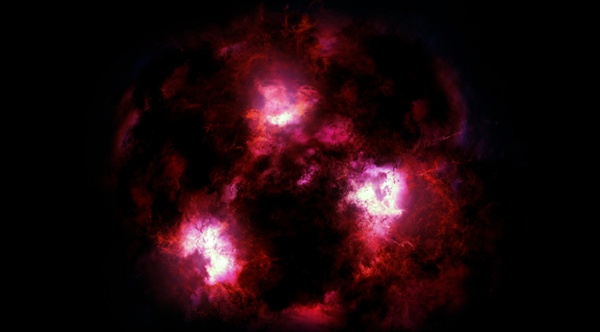Scientists accidentally discovered a galaxy as it existed just 1 billion years after the Big Bang. It was already forming hundreds of stars each year.
Scientists have regarded these galaxies as the stuff of fairytales and folklore, as only the footprints of such galaxies have existed. But now, a study published in the Astrophysical Journal says these galaxies do exist, and in fact, astronomer Christina Williams of the University of Arizona’s Steward Observatory has spotted one.
The galaxy is 12.5 billion light years away from Earth, leading scientists to believe it could unravel mysteries related to the origins of the universe. Using the famed Atacama Large Millimeter Array (ALMA), a slew of telescopes along the high plateaus of Chile’s Atacama desert, Williams was able to catch sight of this mysterious galaxy.
But how did the galaxy stay hidden for so long? Astronomers suspect that stars forming inside a younger nearby galaxy produced a warm cloud of dust, which obscured the ancient star nursery.
“When I saw this galaxy was invisible at any other wavelength, I got really excited because it meant that it was probably really far away and hidden by clouds of dust,” Williams said in a press statement.
Odds are galaxies like this one are more common than previously thought. “The observations for the current study were made in a tiny part of the sky, less than 1 percent the disc of the full moon,” Williams said.















